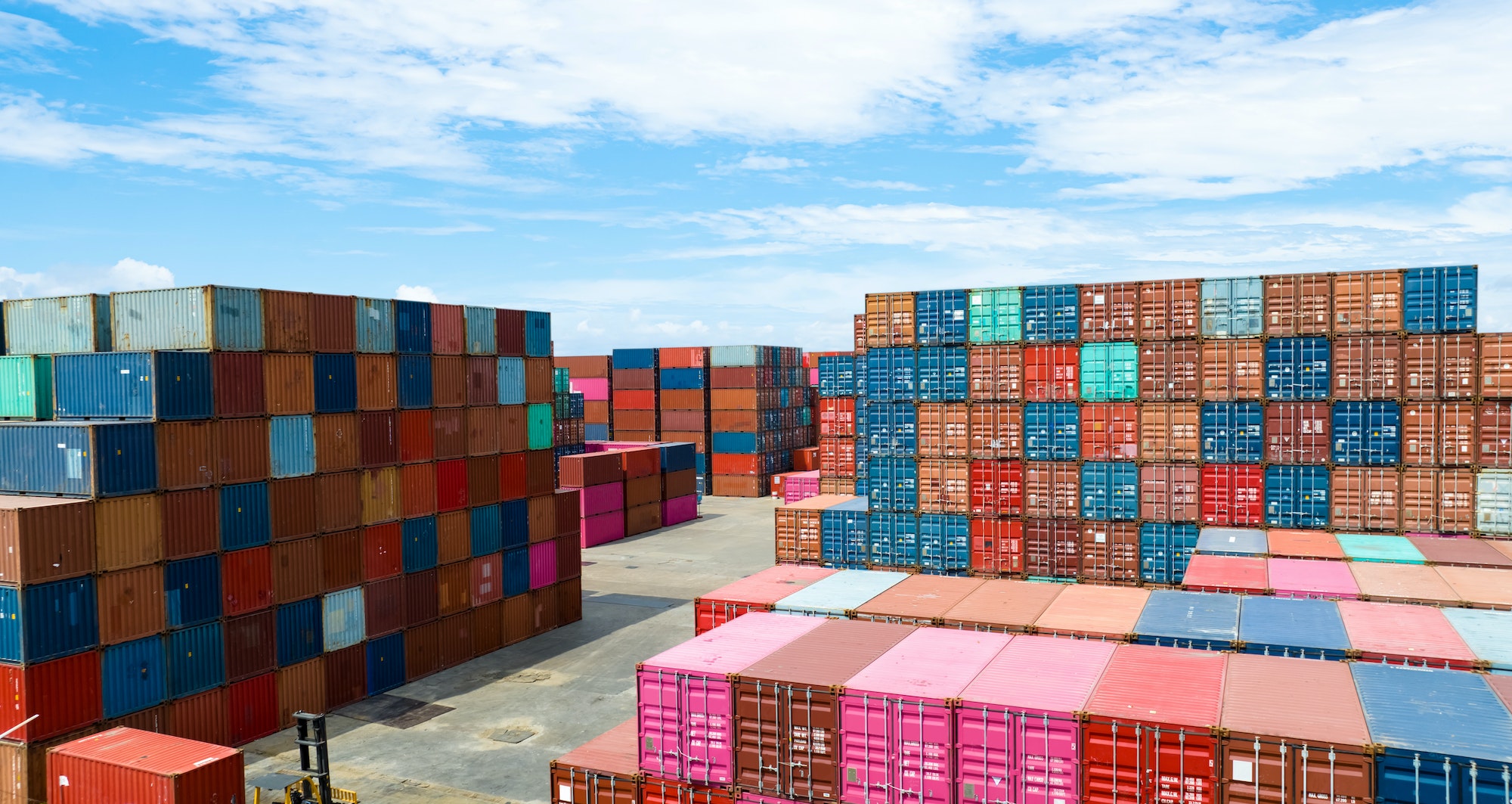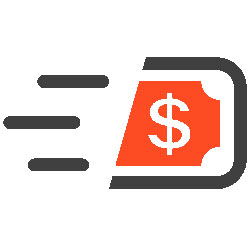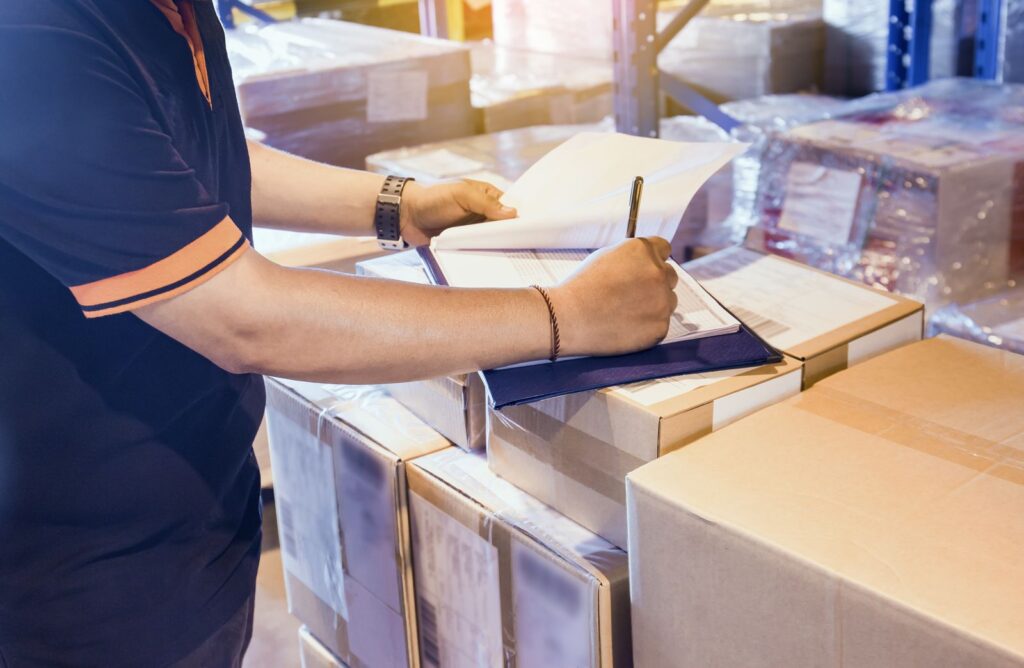
Why Kolmio Logistics?
Guaranteeing the flow of merchandise to its final destination with the quality with which it was designed from its origin, under a 'zero surprises' culture of execution in a 'transparent' way for its actors and 'sustainable' for the ecosystem is the way we work, and sets the stage for our great promises:

We accelerate your company’s Cash Conversion Cycle
The Cash Conversion Cycle is a logistical and economic metric that measures the period that elapses between the acquisition of the raw material for production until it is collected for the sale of the final product.
A reduction in the cash conversion cycle can improve the efficiency, liquidity, profitability and flexibility of your company, which can contribute to your long-term success.
Kolmio Logistics can contribute to the reduction of the cash conversion cycle through the optimization of the order process, the reduction of delivery times, the reduction of storage costs, and the efficient management of the supply chain.
Contact us and let us speed up your cash conversion cycle

We reduce your company’s overall operation costs, ¡Call Us!
The transportation-storage relationship and other variables usually represent an important part of a company’s total spending, and much of it is linked to the distribution methods used to move raw materials, products, and their intermediate processes, to their final delivery.
At Kolmio Logistics we have developed strategies and actions with which we can help reduce the total costs of logistics, among these are the optimization of total loads, the use of appropriate technology, the reduction of delivery times, stock regularization, increased communication between the areas involved, as well as efficient actions to handle returns and make storage spaces more efficient, among others.
Undoubtedly, reducing the total integrated cost implies coordination, analysis, application of intelligent strategies and the optimization of logistics operations. We know how to do it.
Let us help you, we are experts in reducing our clients’ overall operation costs.

We are committed to giving the best service for your customers, ¡On time, all the time!
More than 30 years of experience allow us to smoothly execute all the processes required within the supply chain. We do these services through a single window, so customer service is frank and direct.
All our services are carried out with a high focus on clients and the generation of integral economic and social value. In this way, our companies complement the most complete offer of services, to operate in all the links within a supply chain, from the handling of raw materials, in the relevant parts of the production, storage, and customs process, to the delivery of a finished product, at the convenience of the end customer.
The coordination between all the key players in our processes offers precision.
Let us serve you as it should: excellent, on time and at a good price.
Get to know us
The commitment we put into what we do drives the growth of companies that entrust us with the logistics part of their operations
Every day, we seek to earn the trust of our clients by delivering exceptional logistics solutions. This can be supported by the extraordinary human and professional qualities of our collaborators and partners.
With more than thirty years of experience in the field, we have managed to build a 3PL+ logistics service, that is backed by a vast network of professionals specialized in different branches of the industry.
This coordinated effort delivers great benefits to our clients, not only because of the quality of the actions themselves (delivery of the goods in adequate conditions and in the shortest possible time) but also because of the profitability that all our complementary actions generate in terms of cost savings.
Everything we do is backed by a commitment to our core values, a dedication to quality, and the active-incremental expertise with which we continue to build exceptional service.
Our Mission
Guarantee the flow of merchandise to its final destination with the quality with which it was designed from its origin, under a culture of zero surprises execution in a transparent way for its actors and sustainable for the ecosystem
Our Core Values

We Deliver Peace of Mind
We carry out our work focused on the competitiveness and business success of our clients, seeking their peace of mind and confidence

We earn the TRUST of our customers
Through our daily actions and proactive communication, while bringing them quality solutions and results that maintain the relationship

We always maintain a HIGH PERFORMANCE
By striving to get out of our comfort zone, grow and think 'out of the box', we will be better people, a better company, and better business partners.

We value our employees
We exercise teamwork, create an inclusive workforce, strive to listen to each other, and to treat each other as we would like to be treated. That's why we strive to recognize the value of our teammates.

We take part in our community
With the help of our collaborators and business partners, we get involved and promote various corporate social responsibility initiatives.

Our way of working is defined by our ethics
We have a moral responsibility to offer the best service to our clients, by being efficient in operating their supply chain, for this we also have the support of our partners to always do the right thing in the face of the universal values of ethics.
The result of our effort echos in the commitment that identifies us and that is to bring peace of mind to our clients.
What is 3PL+
We're 3PL+
our actions contemplate planning based on sales and operations, under the vision of integrated logistics.
3PL+ is the integration of logistics actions based on sales and operations planning, with the goal of increasing the efficiency and profitability of the supply chain for your company while reducing the cash conversion cycle.
It is easy to say, but learning from experience and applying creativity and innovation in our activities has taken us time.
We connect the logistics of your supply chain at every point, dry or cold storage, and dry or cold transport, to give precision, efficiency, and security for all your shipments.
This is one of our differences and what you get with Kolmio Logistics’ 3PL+ model is a competitive advantage while enjoying the peace of mind that is implicit in our service.
We can increase efficiency and profitability in your supply chain while reducing the cash conversion cycle.
Ask about our 3PL+ model!
Our Companies
KOLMIO Logistics is an international logistics operator that integrates a set of different services to satisfy your company's supply chain, from planning to taking part in operating effectively in any part of your process.
To fulfill its functions, we have three different entities and brands that operate mainly in Mexico, the United States and Canada. Our experience and relationships allow us to also offer you services that involve the 5 continents.


 |
|---|
FTL cargo services with AAA providers (dedicated and spot) Mexico - USA – Canada |
“Drop & Hook” services
|
Warehousing services (consolidation, deconsolidation y added value services)
|
Expedited services
|
Proactive satellite tracking
|
Analysis of operational behavior
|
Cross Border services
|
Customs Brokerage (Patent 3073), Cd. México, AICM, Port of Veracruz, Nvo Laredo, Juarez y Port of Progreso
|
MÉXICO – EU – CANADA
|

 |
|---|
FTL cargo services with AAA providers (dedicated and spot) Mexico - USA – Canada
|
“Drop & Hook” services
|
Warehousing services (consolidation, deconsolidation y added value services)
|
Expedited services
|
Proactive satellite tracking
|
Analysis of operational behavior
|
MÉXICO
|

 |
|---|
LTL Express cargo services (Sprinters y Small Box Trucks)
|
Service between Mexico - USA
|
Servicio intra USA e Intra México
|
Dedicated Express Service
|
Occasional Express Service
|
Proactive satellite tracking
|
Analysis of operational behavior
|
MÉXICO – EU
|
Certifications
SE AGREGÓ ESTE SLIDE. AQUÍ LA INTENCIÓN ES:
MENCIONAR QUÉ CERTIFICACIONES TIENE KL
EN CASO DE NO TENER CERTIFICACIONES, SE PODRÍA MENCIONAR QUE LOS OPERACDORES DEL SERVICIO CON LOS QUE TRAAJAMOS CUENTAN CON LAS CERTIFICACIONES: A, B, C, D, E, F, G….. (PARA ESTO HABRÁ QUE PONER LOS LOGOS DE LAS CERTIFICACIONES)






Glossary of Terms and Acronyms in Logistics and Supply Chains
Differences
A
B
C
D
E
F
G
H
I
J
K
L
M
N
O
P
Q
R
S
T
U
W
Glossary of Terms and Acronyms in Logistics and Supply Chains
Before moving on to a glossary of terms in our field of expertise, it is important to establish the differences between what is considered Logistics and Supply Chain.
To understand the difference between the two, it is first necessary to know what each of these terms means.
Beyond dealing with two separate concepts, the important thing is to assimilate that they are different areas of action with different impact on companies and businesses, but that they are strongly intertwined anyway.
Logistics
It refers to all the coordination and management processes to get the right product to the right customer, in the right place and at the right time. Therefore, logistics is responsible for everything related to a final product in terms of storage, inventory, sale, logistics transport and customer service.
Supply chain
It refers to the network of facilities and processes involved in the entire life cycle of a product until it reaches the final customer. In this sense, the supply chain consists of three parts:
Supply: acquisition of raw materials for the production of final products.
Manufacturing: The process of converting raw materials into finished, marketable products.
Distribution: processes that seek to get the products to the final consumer, this includes tasks such as storage and transportation.
Thus, by reviewing both concepts, we can understand that logistics is part of the supply chain.
In this way, the management of the supply chain is a strategic function and at the same time logistics that implies the administration of the movement of materials and services, optimizing them so that a merchandise reaches the final customer in optimal conditions.
Comparison Chart of Difference Between Logistics and Supply Chain
Logistics | Cadena de Suministro | |
|---|---|---|
COSTS | Reduces costs in the distribution of products. | Reduces costs in the acquisition of raw materials. |
TIME | Deliver products to customers in the shortest possible time. | Control the times of the processes in the plant so that logistics does not fail. |
RELATIONS
| Improve the relationship with customers.
| Improves the relationship between customers, with suppliers, distributors, merchants, etc.
|
GOALS
| Meet the demand of customers. | Satisfies the requirements to enter new markets.
|
TECHNOLOGIES
| Warehouse Management System (WMS) and transportation software
| Supply Chain Management (SCM) system
|
ASSESSMENT
| The evaluation is based on a series of KPIs and logistics indicators.
| Supply chain assessment is based on SRM, ISCM and CRM factors.
|
RESPONSIBLE
| Manager or Head of Logistics.
| Supply Chain Manager.
|
Here are some common terms and acronyms in logistics and supply chain.
3PL Third Party Logistics / Third-party logistics
Refers to a company’s use of external entities to manage elements of its distribution, warehousing, and fulfillment needs. Although a third-party logistics provider does not own the inventory it manages, it is responsible for performing the fulfillment activities requested by its customers.
Provisioning
Function that describes all the actions focused on supplying the company with the raw materials necessary for its production. It is calculated based on the needs and demand cycles, for the maximum profitability of the warehouse.
Materials Manager
Manage the inventory of raw materials. It coordinates with purchases, production and suppliers to ensure the reliability and efficiency of the supply of inputs.
Customs Agent (Customs Broker)
Person authorized by customs or empowered before it by the competent authority, to dispatch merchandise in the name and representation of a third party (importer or exporter).
Chaotic storage
Volumetric optimization parameter, where the definition of storage spaces is based on the criteria of varied use: it achieves the versatility of the positions, without maintaining fixed locations.
Automatic warehouse
Storage system in which the handling elements are fully automated
Block storage
Storage system by direct stacking of loads.
ABC analysis
The distribution of items based on their movements.
A – 10 or 20% of the items that generate between 50% and 70% of sales.
B – 20% of the items that generate 20% of the sales.
C – between 60% and 70% of the items that represent 10 to 30% of sales.
Logistics Analyst
Professional who understands, predicts and perfects logistics processes. It compiles data, analyzes results, identifies problems, and produces support recommendations.
Article
The smallest, indivisible part of an order, which is part of the assortment (the products in the warehouse).
Stock area
Area where loads that are not intended to be transported are stored.
Blockchain (chain of blocks)
Blockchain is a distributed ledger technology that establishes a shared, immutable record of all transactions that take place within a network, and then allows authorized parties to access reliable and accurate data in real time.
For transportation, blockchain is much more applicable if it can be embedded into existing technologies and processes. It won’t replace an application or database, but it can improve transparency, visibility, and security.
B/L (Bill of Lading)
It’s the bill of lading. Legal and globally accepted document that covers a certain merchandise during its maritime journey (even with a multimodal portion) that commonly must be revalidated at destination for customs to accept customs clearance.
Cash Conversion Cycle / Cash Conversion Cycle
It is a logistical and economic metric that measures the period that elapses between the acquisition of raw material for production until it is charged for the sale of the final product.
Tariff classification
Action of determining the numerical code that corresponds to a certain merchandise based on the classification system adopted by customs for its import or export, by means of which the corresponding tariff and non-tariff conditions are determined, which serves, in parallel, as a basis for the formulation of international trade statistics.
COGS
Cost of goods sold / Cost of Goods Sold
Consolidation
Grouping of partial loads, compatible by nature and destination, to take advantage of warehouse spaces and reduce transportation costs.
Logistics Consultant
Advisor that optimizes logistics performance through strategic planning and process reengineering. It enables your customers to develop the logistics tools, processes, and knowledge base needed to create value.
Container
Cargo transport unit that deals with the movement of goods by land, sea or air.
Total Integrated Cost
It usually represents half of a company’s total spend, and is linked to the distribution modes used to move products from loading to final routing and delivery.
The total cost is integrated by the sum of the cost of production and the costs of distribution, the three previous ones and other additional costs. In turn, the sale price is determined by adding a profit percentage to the total cost. This is the traditional way of integrating the sale price.
CRM
Management of the relationship with the client / Customer Relationship Management
Cross docking
Reception and classification operations in cargo transfer bases, which imply immediate departure for distribution. Offers merchandise in minimal handling and storage conditions.
Demand
The quantity of a good/service that a specific public wishes to acquire at a given moment, in exchange for a fair price.
Customs warehouse
Special regime through which foreign, national or nationalized goods are deposited in a place designated for this purpose, under the control and power of customs, without being subject to payment of import taxes and customs service fees, for their sale in national and international markets, prior compliance with legal requirements.
Addressee
The recipient of a shipment is usually the final customer, who receives from the supplier directly or through a distribution channel the merchandise that he has purchased after completing his purchase process by some traditional means or via online.
DC
Distribution Center
The inventory processing and storage operations base. Its goal is to optimize the distribution of the supply chain.
Distribution
All the means through which a product reaches the final customer, under the conditions agreed by the parties, in a specific place and in exchange for payment of the stipulated price.
SAD
Single Administrative Document, is a document necessary for compliance with the customs formalities required for merchandise exchange operations and which serves as the basis for the tax declaration.
EDI
Electronic Data Interchange / Electronic data exchange
Standardized transmission of data between organizations by electronic means.
EFT
Electronic Funds Transfer
THE D
Electronic recording device. ELD might be a more recognizable acronym as it is often associated with last year’s ELD mandate update. ELD is a technology that records drivers’ time and controls the engines of their vehicles. The data collected by the ELD allows a better understanding of commercial driving habits and, therefore, better regulatory policies can be developed.
Packaging
The means used to protect and condition the merchandise, leaving it ready for transport.
Container
Container that collects the product, delimits its volume and separates it from its contact with the outside.
EQO
Quantity of economic order / Economic Order Quantity
ERP
Business resource planning / Enterprise Resource Planning
FIFO
First Entries, First Exits / First In, First Out
This principle establishes that the first goods stored must also be the first to be sold or withdrawn.
FF
Cargo Agent / Freight Forward
It is a company that, in exchange for a fee, arranges shipments for the sender by liaising with the carriers. A Cargo Agent does not move the merchandise but acts as an agent in the logistics network.
FTL
Full Load Transport / Full Truck Load
It is a term that occurs when the full quota of a truck is used to carry out the transport of merchandise.
The Full Track Load concept refers to the term full load, which implies that the merchandise to be transported is occupying all the available space in the trailer.
In this way, FTL transport is a viable option for those companies that seek security and speed in their delivery times, since this modality has a single route and does not imply the transfer of the cargo to another means of transport.
FTZ – Foreign Trade Zone
An FTZ is a kind of special economic zone where goods can be landed, stored, handled, manufactured, and even reconfigured and re-exported under certain customs regulations.
Stock management
Warehouse management to maintain the balance between risk and opportunity, spending and saving, demand and response capacity.
GPS
Global Positioning System
HVS – High Value Shipping
These types of merchandise are considered to be of high value, either due to their own cost, rarity, or specialization. This type of cargo is always recommended to be insured.
IATA
It is the world’s International Air Transport Association and represents 82% of total air traffic. IATA works to ensure the safety of airspace and advocates for strong regulation of air transport.
Incoterms
Terms and requirements of an international sale transaction. Because of this, they are in charge of stipulating when and where the transfer of risks and the obligation in terms of costs take place, as well as who is responsible for them and other factors in relation to this type of transaction.
Logistics Engineer
Designs logistics processes, technology and/or infrastructure to support the efficient management of products from their conception on the drawing board and throughout their production, distribution and until completing their life cycle. Develops recommendations on matters such as activity times, location of operations and human and environmental factors that affect logistics performance. He works closely with customers, logistics service providers, logistics managers and other members of the supply chain to develop innovative solutions to problems in ongoing operations.
Intermodal
System that uses different means of transport to drive costs, quality and sustainability.
Inventory
The representation of the products that are stored in a warehouse, which may be raw materials, finished products or goods subject to transformation. Its main characteristic is the immediacy of its availability for sale, consumption or processing.
Permanent inventory
It is the function that allows, by means of a debit and a credit, to control the real capacity within the warehouse, carrying out an update process in each movement carried out.
JOC – Journal of Commerce
It is one of the forms of communication to keep up to date with news and events in the sector. We also have the opportunity to share our expert insight with the JOC team on a regular basis.
JIT
Just in time
Arrival of merchandise from the supplier, directly to the production processes, just at the moment they are needed.
KPIs
Key Performance Indicator
Key performance indicators. Metrics used to quantify objectives that reflect the performance of an organization, and that are generally included in its strategic plan. These indicators are used in business intelligence to assist or help the current state of a business to prescribe a future course of action.
Order line
The order that the supply chain must prepare and send.
Reverse logistics
Planning, development of actions and monitoring of all activities related to the transfer of merchandise from its typical final destination, in the opposite direction to that of the usual sales flows.
Recovers and recycles containers, packaging and hazardous waste, excess inventory, customer returns, obsolete products and seasonal inventories.
LTL
Less than a full load / less-than-truckload
It refers to the transport of products, parts, merchandise, etc. relatively small that do not require all the space of a large truck. They are smaller shipments that are generally consolidated with others in large trucks or are transported by smaller units, such as pickup trucks, sprinters, vans, or small trucks.
Warehouse map
List of picking and stock slots in the warehouse.
Commodity
Business assets that can be stored, transported and distributed. Includes Live Animals, Container, Pallet And Other Elements.
MRP
Material Requirements Planning
NAPHTHA
North American Free Trade Agreement (NAFTA) / North American Free Trade Agreement
NVOCC
Non Vessel Owning Common Carrier
The operations of an NVOCC typically consist of selling, packing and transporting containers to ports. An NVOCC contracts with carriers to guarantee a set number of units each year, and in return, the carrier offers better return rates to the NVOCC.
OEM
Original Equipment Manufacturer
An OEM is an organization that makes products from parts purchased from other organizations. These products may be marketed by another organization once manufactured.
Pallet
Support that facilitates the storage (manual or automated) or transport of goods.
Picking
It is the area of the warehouse where the orders are prepared, and the method to do so.
Delivery term
The time between the entry of the order and the exit of the warehouse.
PO
Purchase Order
POE
Port of entry
It is the place where shipments are allowed to enter after clearing customs. Typically, to go through a PoE efficiently, PoE orders are used to ensure that there is a record of booking, shipping, and customs clearance.
Preparation
Collection of various items according to customer requests.
POS
Point of sale
QC
Quality control
RFID
Radio Frequency Identification
Warehouse rotation
The number of times products have gone out and been replenished, in a given time.
Customer service
The attention that the organization provides to its consumers and users in person, by telephone, by mail, social media or some other telematic modality at the time of perfecting the purchase of products or service contract, during commercial or advertising actions that are directed him before or after said moment and also when it comes to solving your questions or solving technical problems.
Stock Keeping Unit (SKU)
Record of units in stock within the warehouse. They are the different stock groups.
Simplicity as a Service (SaaS)
This concept is succinctly described as “enabling clients to achieve desired results in an ever-changing business environment with less time, effort, cost, risk, and resources.”
It’s about helping companies respond faster and smarter to changing customer requirements, competitive threats, regulations, and other market forces.
SCM
Management of the supply chain / Supply Chain Management
Warehouse Management System (SGA)
Computer tool designed to manage the operations of a warehouse
T-MEC
Multilateral trade agreement to form a zone of exchange of products between Canada, the United States and Mexico
TEU
Twenty Foot Equivalent Unit. The TEU is used to measure the cargo capacity of a ship. The dimensions of a TEU are equivalent to those of a standard 20-foot container: 20 feet long and 8 feet high.
IRR
International Road Transport / Transport International Routier
Customs agreement for the international transport of goods between member states.
Empty transport
Travel of a vehicle without load.
Multimodal transport
Transport operation that combines more than one mode.
Traceability
Monitoring of a product, from the moment it is manufactured until it reaches the point of sale.
Load unit
Set of articles grouped to homogenize their handling, transport and storage.
Production unit
Group of human and material resources with a common objective within the industrial activity.
USMCA
The United States-Mexico-Canada Agreement (USMCA) is a trade agreement between the three mentioned countries. When implemented, it will replace the North American Free Trade Agreement (NAFTA).
WMS
Inventory Management System / Warehouse Management System


